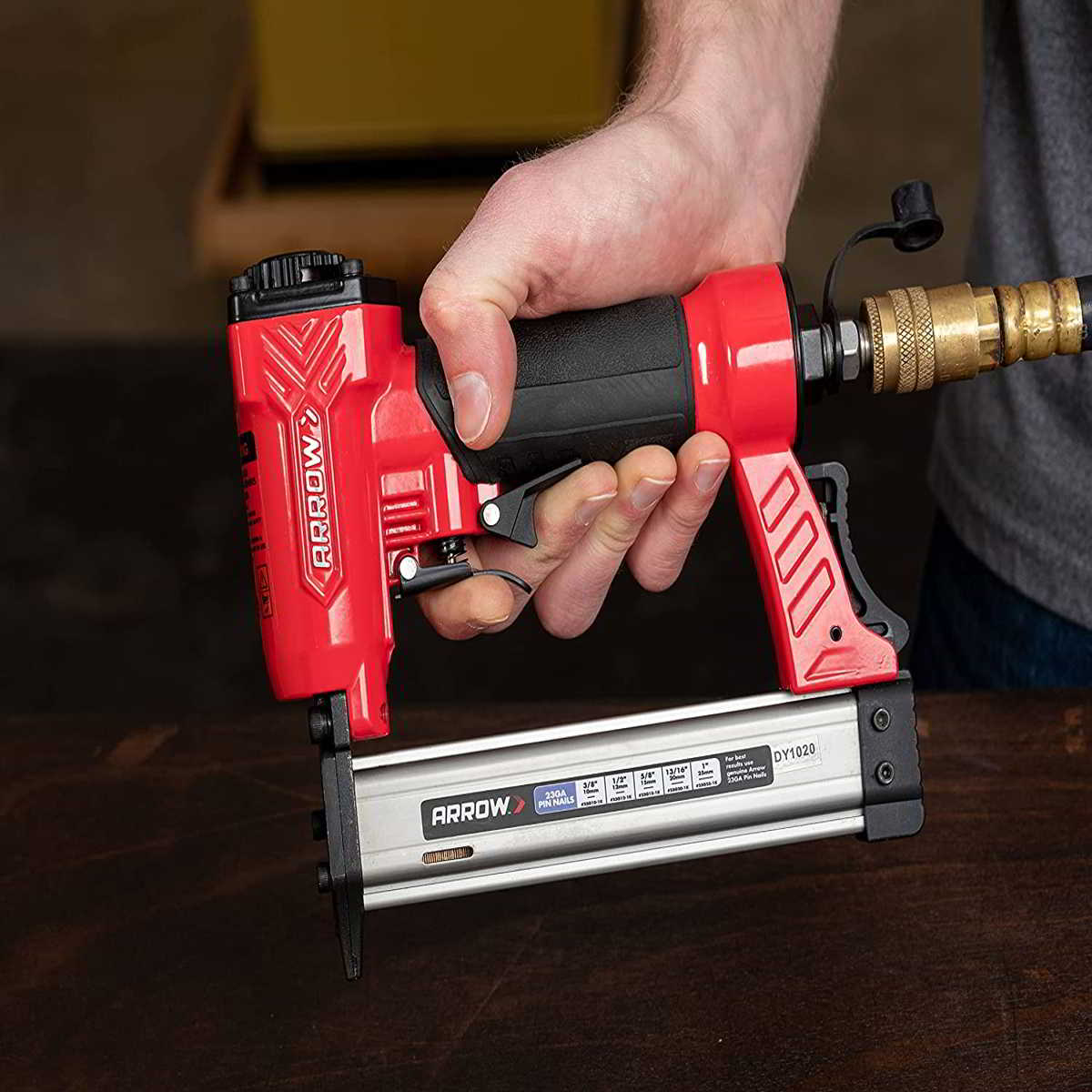As an Amazon affiliate, we may earn a small commision from qualifying purchases.
You could have been hearing a lot of good things about pin nailers and you could be debating where to invest in one or not…
So what is a pin nailer used for and is it really worth adding to your pro or DIY workshop?
Well, read on to find out what we think about this often dismissed tool..
What is a pin nailer used for?
Before we look at its uses, let us understand what the tool exactly is..
What is a pin nailer?
One, it is a nailer- pretty much in the same class as a brad, framing, or finish nailer.
More importantly, as the name suggests, it fires pin nails- pin nails (or simply pins as some prefer calling them) are majorly used for temporary glue-ups (you use them to temporarily hold pieces in place, while your glue dries up probably in between steps).
Here is something super important: Unlike conventional nails, pin nails are actually headless (they’re literary minus heads).
And that is the source of their biggest advantage: Since pin nails are without heads, they are effortlessly driven deep into materials which in turn means they are not easily noticed which makes them awesome for tasks where cosmetic value is critical.
In other words, pin nails are the way to go for projects where nailing work needs to be discreet like when you’re installing delicate trim pieces!
Keep in mind that these headless nails are so tiny –they’re pretty much similar to sewing pins (in diameter).
That’s right- the most common pins are made of 23 Gauge wire (they’re precisely 0.025 inch/0.64mm in diameter).
I should add that their smooth shank, as well as chisel point, reduces the chance of wood splitting.
Turning to pin nails’ lengths, you can buy anything from 1/2″ up to 2” depending on the brand name.
For example, Paslode Canada sells Pin Nails from 3/4″ to 1-3/8″ (with a box having 3000 nails).
What is a pin nailer used for?
The above description should give you a good idea about what a pin nailer is used for.
Of course, you don’t need to have studied rocket science in college to tell that since pin nailers are the tools we use to shoot pin nails, then they’re used for wood projects in which folks typically use glue for hold-up.
In other words, a pin nailer’s main use is to fire 23-gauge pin nails whenever you want to clamp pieces together (we often speak about glue + pin) until glue dries up so that you can complete the remaining steps in the project.
A good example is on cabinet doors – you can use the pins to hold the rail(to the style) while glue dries.
Other Pin Nailer Uses
On the whole, the tool does not have a multitude of uses.
However, there are a few other potential pin nailer uses (away from the aforementioned gluing-up of wood to wood)..
For instance, pin nailers are quite useful in shooting outside miter joints (together), especially on crown.
Bear in mind that shooting both ways usually eliminates the need for the fastener to have a head (of course, use white glue).
A 23ga pin nailer can also be useful for kitchen scribes and 3/4″ paneling.
Can you use a pinner for securing something larger, say a cabinet (or even a drawer box) during a glue-up?
Well, I doubt- for this kind of gluing-up, you might be better off with a brad nailer- brads have better holding power for cabinets, drawer-boxes, etc. during glue-ups though you’ll certainly have some filler work to do (brads creates bigger holes).
Can you use a pin nailer to install trim and crown molding?
Well, if it’s fine trim, then go with a pinner.
But if you’re installing heavier trim (or crown molding), you’ll want to again look at a brad nailer.
Again here you need more holding power (which a Brad nailer has though brads can crack wood and will again create bigger holes meaning some extra filler step).
In a nutshell, Pin nailers are amazing for thin pieces -and it is until the glue dries- but they are, in general, unsuitable for large trim works.
Can you use a pin nailer for baseboards?
For the reasons I have explained above, it’s better to use a brad nailer for baseboards.
What is the most important thing to look at when buying a pin nailer?
The biggest differentiator when it comes to pin nailers is the supported pin size…..they take in a range of lengths from ½ inch – 1 inch to ⅜ inch – 1 ⅜ inch, and more
That said, you are better off with a pinner that takes a higher range of pin lengths because it will be useful for a bigger variety of projects.
What is a 23 gauge pin nailer used for? In summary
The one time you will have to think about a pin nailer is when you come to the glue + nailing step especially when you are handling fine trim work.
There are a few other applications yes- and I have outlined them above- but we have agreed that a pinner is a very, very situational tool though pretty handy when it is needed.
Just to be clear, you cannot count on a pin nailer for anything structural- and that is because the tiny headless pin nails do not have enough holding strength.
For such (projects as hanging doors), you might want to look at a finish nailer (16ga or 15 gauge).
Otherwise, brad nailers make a significantly bigger hole but they’ll actually hold better and can hence replace a pin nailer nearly everywhere as long as you’re not worried about filling the holes.
ALSO READ:
What size nails for trim? Here is what you need to know

